Buenos Aires by Night Tour (Local food dinner + Guided stroll + Sightseeing with driver)
Amazing food: Locro, Carbonada, Salads, Empanadas and much more deliciousness...
All year long, there are crowds of all ages going out after dark in Buenos Aires for a bite and a stroll, like you'll see in no other city! Description: This is a fun, guided night tour (in English) showing how we live here, and includes a truly outstanding Argentinian dinner with all main local foods sampled: Locro, Carbonada, Empanadas, etc. (wine and beef are optional) and a traditional night-cap or tea or ice cream much later at some different 'cool' place�like we always do here. In between, we will walk-the-dinner-off while we visit some of the many fun, safe and charming night districts like Las Ca�itas, Palermo SOHO, Puerto Madero, San Telmo, Reconquista, La Placita, etc. (each night is different as we choose the most suitable circuit for each day). Don't be surprised to see people all ages going out late at night (Argentine families often go out late at night with their young ones). There are very few cities in the world with so many fun things to do at night as ours. Dont miss this experience!! This is one you'll tell your friends about.transportation, drinks and delicious food are included �except beef & alcohol (which are optional).When: 7:30 pm Duration: 4 hours (7:30pm to 11:30pm. Soon after we start (and early by local standards) we will stop for dinner 'a la carte' (you choose) at some unforgettable typical-Argentine-food place of our choice (cost is included--we pay). We choose different restaurants each day (you can join every night if you wish!!), and we will advise you on the foods to choose and their history (vegeterian options are always available). Excellent drinks and beer are included but wine and beef are not and are optionally available (on you: we advise, you choose, you pay).Price: US$187 p/p *** Minimum 2 people (or ask) ***Discounts: n/aMeet: Night tours can begin with your guide meeting you 7pm in your downtown hotel lobby, but unless otherwise specified, these tours meet 7:30pm at the downtown corner of Santa Fe Av. and Callao Av., inside Filippo cafe. Look for our guides, wearing 'BA-Walking-Tours' vests, badges, shirts or baseball caps. See map here. Note: Please note this is not a tour about drinking (though drinks are OK). Booze is not a cultural mainstay here: Going out at night, walking around, cafe & restaurant hopping, people-watching, enjoying outstanding food and ending the night with some treat (much later and somewhere else) are!Some key sights:
Barrio Norte area genuine local food experience San Telmo, old & bohemian Recoleta quarter traditional elegance by night Corrientes Av. (theatre row) by night Reconquista food-bar row by night Las Canitas (delights by the Polo field) Palermo Hollywood quarter Palermo Soho walk La Placita downtown (restaurant & theatre area) by night Puerto Madero, new & fancy ...and much, much more!!
Tour Outline (abbreviated): (click on pictures to toggle size) In this walking tour we will show you the main 'clean' night-out districts (yes, everybody goes out at night here) that Buenos Aires can offer: Their fascinating places, habits and history. Once you are familiar with these areas you will be able to access hundreds of interesting and fun places and activities at night here on your own and without any help.
Puerto Madero , the newest neighborhood in Buenos Aires, with its surprising history and luscious landscapes, deserves a special visit from you.
Las Ca�itas was once the favored neighborhood of the military powers during the dictatorship period of 1976 to 1982, and the area remains a safe and secure neighborhood. A military training base, hospital, high school, and various family housing units still remain and encircle the neighborhood, creating a sense of safety on the area's streets. Today, the area is far better known among the hip, trendy, and nouveau riches as the place to dine out, have a drink, party, and be seen in the fashionable establishments built into converted low-rise former houses on B�ez street. The polo field where the International Championships take place is also in the neighborhood and is technically part of the military bases. The polo field's presence makes the neighborhood bars and restaurants great places for enthusiasts to catch polo stars celebrating their victories in season.
Palermo Viejo , once a run-down neighborhood of warehouses, factories, and tiny decaying stucco homes in which few people cared to live as recently as 15 years ago, has been transformed into the city's chicest destination. Palermo Viejo is further divided into Palermo Soho to the south and Palermo Hollywood to the north, with railway tracks and Avenida Juan B. Justo as the dividing line. With real estate pressure and the need to always be trendy, many areas that are technically in Palermo Hollywood are now saying they are in Palermo Soho, considered the more upscale of the two areas, blurring this dividing line.
Palermo Soho does not, of course, have much of a history, because it�s a recently made-up name based on the area�s similarity to the entertainment district SoHo in New York. What about Palermo Viejo? That�s a made up name as well, just one that was made up longer ago! What is now Palermo Viejo used to be called Villa Alvear. Porte�os seem to have a problem with official names for things.
Recoleta A very elegant neighborhood, La Recoleta has a distinctly European feel, and locals call it a piece of Paris transplanted. Here, tree-lined avenues lead past fashionable restaurants, cafes, boutiques, and galleries. Much of the action takes place along the pedestrian walkway Roberto M. Ortiz and in front of the Cultural Center and Recoleta Cemetery. This is a neighborhood of plazas and parks, a place where tourists and wealthy Argentines spend their leisure time outside. Weekends bring street performances, artisan exhibits, fairs, and sports.
San Telmo Buenos Aires's oldest neighborhood, San Telmo originally housed the city's elite. But when yellow fever struck in the 1870s -- aggravated by substandard conditions in the area -- the aristocrats moved north. Poor immigrants soon filled this neighborhood, and the houses were converted to tenements, called conventillos (little convents). In 1970, the city passed regulations to restore some of San Telmo's architectural landmarks. Still, gentrification has been a slow process, and the neighborhood maintains a gently decayed, very authentic atmosphere, reminiscent of Cuba's old Havana. It's a bohemian enclave, attracting tourists, locals, and performers seven days a week on its streets.


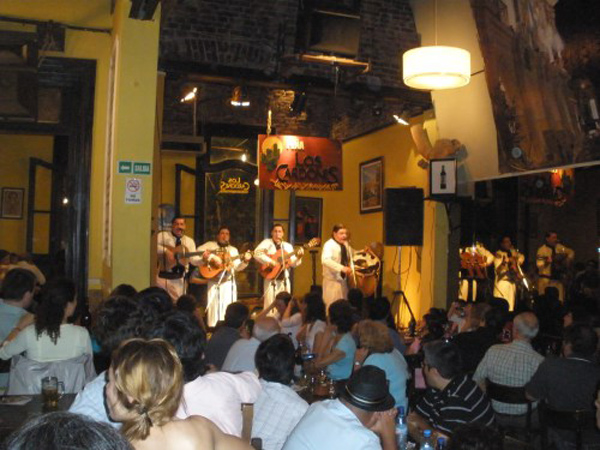
![]() Description: This is a fun, guided night tour (in English) showing how we live here, and includes a truly outstanding Argentinian dinner with all main local foods sampled: Locro, Carbonada, Empanadas, etc. (wine and beef are optional) and a traditional night-cap or tea or ice cream much later at some different 'cool' place�like we always do here. In between, we will walk-the-dinner-off while we visit some of the many fun, safe and charming night districts like Las Ca�itas, Palermo SOHO, Puerto Madero, San Telmo, Reconquista, La Placita, etc. (each night is different as we choose the most suitable circuit for each day). Don't be surprised to see people all ages going out late at night (Argentine families often go out late at night with their young ones). There are very few cities in the world with so many fun things to do at night as ours. Dont miss this experience!! This is one you'll tell your friends about.
Description: This is a fun, guided night tour (in English) showing how we live here, and includes a truly outstanding Argentinian dinner with all main local foods sampled: Locro, Carbonada, Empanadas, etc. (wine and beef are optional) and a traditional night-cap or tea or ice cream much later at some different 'cool' place�like we always do here. In between, we will walk-the-dinner-off while we visit some of the many fun, safe and charming night districts like Las Ca�itas, Palermo SOHO, Puerto Madero, San Telmo, Reconquista, La Placita, etc. (each night is different as we choose the most suitable circuit for each day). Don't be surprised to see people all ages going out late at night (Argentine families often go out late at night with their young ones). There are very few cities in the world with so many fun things to do at night as ours. Dont miss this experience!! This is one you'll tell your friends about.![]() When: 7:30 pm daily 365 days/year, rain or shine (this tour is only available by booking ahead through our 'Booking' menu entry above)
When: 7:30 pm daily 365 days/year, rain or shine (this tour is only available by booking ahead through our 'Booking' menu entry above)![]() Duration: 4 hours (7:30pm to 11:30pm. Soon after we start (and early by local standards) we will stop for dinner 'a la carte' (you choose) at some unforgettable typical-Argentine-food place of our choice (cost is included--we pay). We choose different restaurants each day (you can join every night if you wish!!), and we will advise you on the foods to choose and their history (vegeterian options are always available). Excellent drinks and beer are included but wine and beef are not and are optionally available (on you: we advise, you choose, you pay).
Duration: 4 hours (7:30pm to 11:30pm. Soon after we start (and early by local standards) we will stop for dinner 'a la carte' (you choose) at some unforgettable typical-Argentine-food place of our choice (cost is included--we pay). We choose different restaurants each day (you can join every night if you wish!!), and we will advise you on the foods to choose and their history (vegeterian options are always available). Excellent drinks and beer are included but wine and beef are not and are optionally available (on you: we advise, you choose, you pay).![]() Price: US$187 p/p *** Minimum 2 people (or ask) ***
Price: US$187 p/p *** Minimum 2 people (or ask) ***![]() Discounts: n/a
Discounts: n/a![]() Meet: Night tours can begin with your guide meeting you 7pm in your downtown hotel lobby, but unless otherwise specified, these tours meet 7:30pm at the downtown corner of Santa Fe Av. and Callao Av., inside Filippo cafe. Look for our guides, wearing 'BA-Walking-Tours' vests, badges, shirts or baseball caps. See map here.
Meet: Night tours can begin with your guide meeting you 7pm in your downtown hotel lobby, but unless otherwise specified, these tours meet 7:30pm at the downtown corner of Santa Fe Av. and Callao Av., inside Filippo cafe. Look for our guides, wearing 'BA-Walking-Tours' vests, badges, shirts or baseball caps. See map here. ![]() Note: Please note this is not a tour about drinking (though drinks are OK). Booze is not a cultural mainstay here: Going out at night, walking around, cafe & restaurant hopping, people-watching, enjoying outstanding food and ending the night with some treat (much later and somewhere else) are!
Note: Please note this is not a tour about drinking (though drinks are OK). Booze is not a cultural mainstay here: Going out at night, walking around, cafe & restaurant hopping, people-watching, enjoying outstanding food and ending the night with some treat (much later and somewhere else) are!![]() Some key sights:
Some key sights:
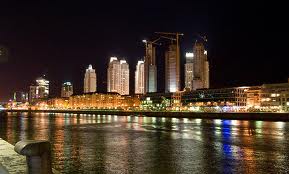
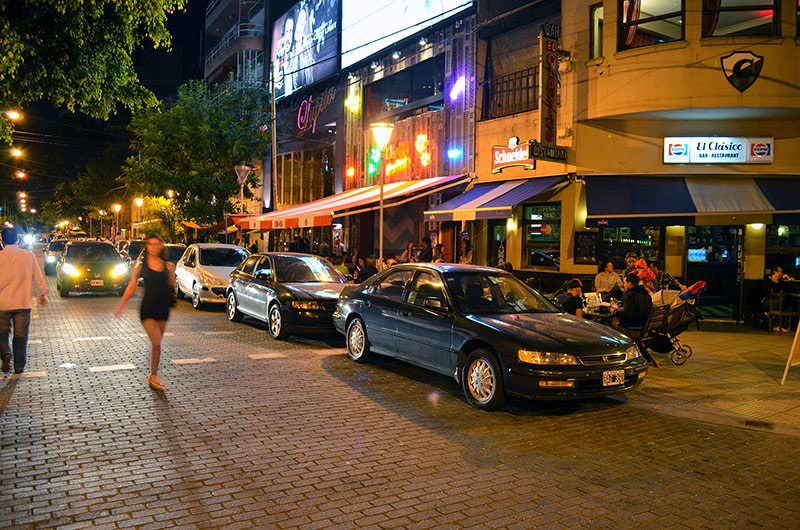
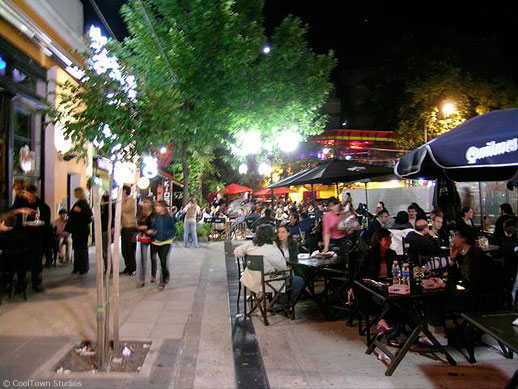 Palermo Viejo, once a run-down neighborhood of warehouses, factories, and tiny decaying stucco homes in which few people cared to live as recently as 15 years ago, has been transformed into the city's chicest destination. Palermo Viejo is further divided into Palermo Soho to the south and Palermo Hollywood to the north, with railway tracks and Avenida Juan B. Justo as the dividing line. With real estate pressure and the need to always be trendy, many areas that are technically in Palermo Hollywood are now saying they are in Palermo Soho, considered the more upscale of the two areas, blurring this dividing line.
Palermo Viejo, once a run-down neighborhood of warehouses, factories, and tiny decaying stucco homes in which few people cared to live as recently as 15 years ago, has been transformed into the city's chicest destination. Palermo Viejo is further divided into Palermo Soho to the south and Palermo Hollywood to the north, with railway tracks and Avenida Juan B. Justo as the dividing line. With real estate pressure and the need to always be trendy, many areas that are technically in Palermo Hollywood are now saying they are in Palermo Soho, considered the more upscale of the two areas, blurring this dividing line.
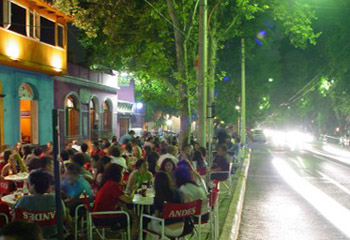 Recoleta A very elegant neighborhood, La Recoleta has a distinctly European feel, and locals call it a piece of Paris transplanted. Here, tree-lined avenues lead past fashionable restaurants, cafes, boutiques, and galleries. Much of the action takes place along the pedestrian walkway Roberto M. Ortiz and in front of the Cultural Center and Recoleta Cemetery. This is a neighborhood of plazas and parks, a place where tourists and wealthy Argentines spend their leisure time outside. Weekends bring street performances, artisan exhibits, fairs, and sports.
Recoleta A very elegant neighborhood, La Recoleta has a distinctly European feel, and locals call it a piece of Paris transplanted. Here, tree-lined avenues lead past fashionable restaurants, cafes, boutiques, and galleries. Much of the action takes place along the pedestrian walkway Roberto M. Ortiz and in front of the Cultural Center and Recoleta Cemetery. This is a neighborhood of plazas and parks, a place where tourists and wealthy Argentines spend their leisure time outside. Weekends bring street performances, artisan exhibits, fairs, and sports.
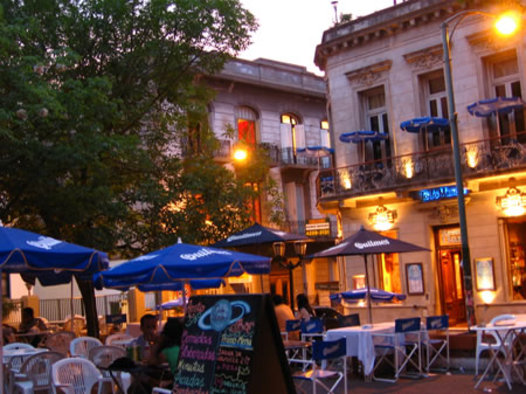
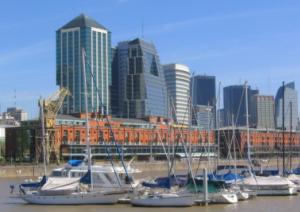
 button to book this tour
button to book this tour